Cerebral Palsy Symptoms
The Centers for Disease Control and Prevention (CDC) define cerebral palsy (cerebral palsy) as “a group of disorders that affect a person’s ability to move and maintain balance and posture.” Cerebral refers to the brain, and palsy refers to difficulty using the muscles. Cerebral palsy affects about 1 in 345 children in the United States, and, according to the CDC, it is the most common childhood motor disability.
Home > What Is Cerebral Palsy? > Cerebral Palsy Symptoms
- Last Updated Date: January 22, 2025
Abnormal brain development or damage to the developing brain that affects muscular control is a prime cause of cerebral palsy. Most children who have cerebral palsy are born with it, although the condition does sometimes occur after birth, according to the National Institutes of Health. According to the CDC, this abnormal development or damage can occur before birth, during delivery, or after birth while the brain is still developing. Cerebral palsy that comes from abnormal brain development or brain damage that occurred before or during birth is called congenital cerebral palsy. The CDC notes that 85 percent to 90 percent of cerebral palsy is congenital. Acquired cerebral palsy, on the other hand, is caused by abnormal brain development or damage that occurs more than 28 days after birth and is usually associated with an infection — such as meningitis — or a head injury. Researchers have also discovered that mutations in certain genes can make a baby more likely to develop cerebral palsy.
Cerebral palsy can cause profound disabilities. While CP patients frequently have challenges with motor function, many of them have average or above-average intelligence and can attend public schools. Supportive treatments and medications can improve motor skills and communication skills for those diagnosed with cerebral palsy. Most people with the disorder have typical life expectancies, according to the NIH.
Early Signs and Symptoms of Cerebral Palsy
Historically doctors have diagnosed cerebral palsy in children between 12 and 24 months old; however, doctors now can diagnose it in children as young as six months. While symptoms can vary from person to person, early signs and symptoms generally include developmental delays, abnormal posture, abnormal muscle tone, uncontrollable movements, and poor balance and coordination. Early detection of cerebral palsy can achieve the best results from potential treatments.
Developmental Days
Children with cerebral palsy display a multitude of symptoms, but developmental delays are the main clue that the child may have CP, according to the National Institutes of Health. For example, the child may be slow rolling over, crawling, sitting, or walking.
Abnormal Posture
Another early sign of cerebral palsy is unusual posture. For example, the child may favor one side over the other when moving.
Abnormal Muscle Tone
Abnormal muscle tone, either overly stiff or floppy, can also indicate cerebral palsy. Overly stiff muscles are said to have spasticity. According to Healthy Children, spasticity is “abnormal tightness in a child’s muscles.” The muscles are tight even when at rest. Alternatively, hypotonia refers to low muscle tone. A child who suffers from hypotonia may have difficulty holding up their head.
Uncontrollable Movements
Children who have cerebral palsy may also have difficulty controlling their movements. This symptom is called dyskinesia and can affect the hands, legs, feet, arms, face, or tongue. Movements can be jerky, slow, or writhing. When dyskinesia affects the tongue, the child may have difficulty talking or swallowing.
Poor Balance and Coordination
Some types of cerebral palsy, such as ataxic cerebral palsy, are characterized by difficulties with balance and coordination. The child may be unsteady when they walk or have problems writing or reaching for and grasping objects.
Signs in Babies Under Six Months
Diagnosing cerebral palsy early can optimize functional outcomes. If early signs are present, doctors will run additional tests to diagnose and begin interventions. The CDC notes the following signs that a baby under six months of age has cerebral palsy:
- Their head lags when you pick them up after they've been lying on their back.
- They feel stiff or floppy.
- They act like they are pushing away when you hold them in your arms and overextend their back and neck.
- Their legs become stiff or cross (scissor) when you pick them up.
Some babies who do not have cerebral palsy may exhibit these symptoms, so obtaining a formal diagnosis is essential.
Signs in Babies Older than Six Months
Signs of cerebral palsy in babies older than six months are:
- Not rolling over in either direction
- Being unable to bring their hands together
- Experiencing difficulty in bringing their hands to their mouth
- Reaching out with one hand while keeping the other fisted
Signs in Babies Older than 10 Months
Babies older than ten months who have cerebral palsy may experience the following:
- Lopsided crawling, or pushing off with one hand and leg while dragging the opposite hand and leg
- Scooting around on their buttocks or hopping on their knees, rather than crawling on all fours
- Being unable to stand even when holding a support
How is Cerebral Palsy diagnosed?
Cerebral palsy cannot be cured, but early diagnosis is critical because contemporary treatments can “optimize neuroplasticity and functional outcomes,” according to an article published the reputable scientific journal JAMA Pediatrics. Early diagnosis may also help to prevent secondary complications.
Doctors typically diagnose the disorder within the first two years of life, although sometimes diagnosis occurs later in life, according to Hospital for Special Surgery (HSS). Diagnosis begins when a parent or doctor notices a sign or a symptom. The doctor will first take a medical history, then use neuroimaging and standardized neurological and motor assessments. Doctors also may use genetic testing to aid in diagnosing cerebral palsy.
The Centers for Disease Control and Prevention note three steps for diagnosing cerebral palsy: developmental monitoring, developmental screening, and developmental and medical evaluations.

Developmental Monitoring
Developmental monitoring, also called surveillance, tracks how the child develops over time. Parents and others involved in the child’s daily care should closely monitor the child’s development. At each well-child physical exam, the doctor will ask parents specific questions about the child’s development and observe the child’s movements. If development seems delayed, the child should be referred to specialists who can do further testing.
While developmental monitoring is vital for all infants, it is particularly imperative in cases of premature birth, low birth weight, multiple births, or when the mother had an infection while pregnant. These circumstances present a higher risk for a child to be born with cerebral palsy.

Developmental Screening
During the developmental screening, the child’s doctor performs specific developmental tests of the child’s motor or movement skills. The American Academy of Pediatrics recommends that doctors perform developmental screening at well-child visits at nine months, 18 months, and 30 months and provide a table for screening. A developmental test may also be given any time concerns are raised. If the doctor has any concerns after a developmental screening, they will refer the child for developmental and medical evaluations.
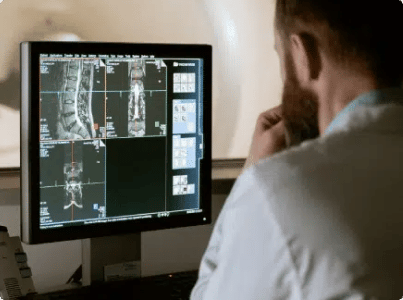
Developmental and Medical Evaluations (MRI/CT Scans)
Primary care pediatricians or specialists conduct developmental and medical evaluations to determine whether the child has cerebral palsy and whether any related developmental conditions exist. Tests often include magnetic resonance imaging (MRI)s, computed tomography (CT exam), cranial ultrasound, electroencephalogram (EEG), the Hammersmith Infant Neurological Examination, and metabolic and genetic testing.
Cerebral palsy is further characterized by type. Individuals typically have one of these types of cerebral palsy, although some have mixed cerebral palsy, which means they have signs of more than one type.
Signs of Spastic Cerebral Palsy
The most common type of cerebral palsy is spastic cerebral palsy, which affects about 80 percent of people with cerebral palsy, according to the CDC. People with spastic cerebral palsy have overly stiff muscles that affect their movements. They may experience symptoms like difficulty walking, awkward reflexes, muscle stiffness (which may occur only on one side of the body), and joints that stay stuck in one position.
Spastic cerebral palsy is further characterized by which part of the body is affected. Spastic diplegia, or spastic diparesis, affects the legs and hips, primarily. Spastic hemiplegia, or spastic hemiparesis, primarily affects one side of the body and generally involves the arm. The most severe type of spastic cerebral palsy is spastic quadriplegia, or quadriparesis, which affects all four limbs, the trunk, and the face. Spastic quadriplegia causes difficulty walking, and is also associated with other neurological symptoms, such as intellectual disabilities, seizures, or problems with speaking, seeing, or hearing.
Signs of Dyskinetic Cerebral Palsy
Another type of cerebral palsy is dyskinetic cerebral palsy. People with this type of CP show abnormal movement patterns, with movements that may be twisting, slow, abrupt, or unpredictable. Besides these abnormal movements, signs of dyskinetic cerebral palsy include floppy limbs and postural difficulties. Sometimes the face is affected, and the individual has trouble with functions like sucking, swallowing, and talking.

Signs of Ataxic Cerebral Palsy
Ataxic cerebral palsy is the third type of CP. People with ataxic cerebral palsy have balance, coordination, and depth-perception problems. They may spread their feet wide apart and be unsteady when they walk. They might be shaky, have tremors, or have difficulty with quick movements or movements that require considerable control, such as writing. They also may experience speech difficulties.
Cerebral Palsy Can Be Treated
Although cerebral palsy cannot be cured, it can be treated. Early intervention and appropriate treatment can significantly increase the quality of life and improve outcomes for people with cerebral palsy. The National Institutes of Health and Mayo Clinic indicate the following treatment options for CP:

Physical therapy to strengthen major muscles and maximize control of functions
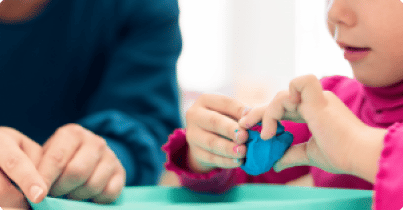
Occupational therapy to help the child develop independence in daily activities

Speech therapy to improve communications skills

Recreational therapy, such as therapeutic horseback riding or skiing to develop motor skills and improve emotional wellbeing

Medications, including oral or injectable muscle relaxants and drugs to reduce drooling
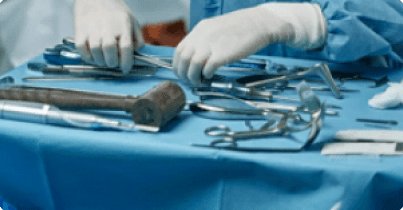
Surgeries, such as orthopedic surgery of arms, spine, hips, or legs, or, in severe cases, selective dorsal rhizotomy to reduce pain and make using assistive devices easier
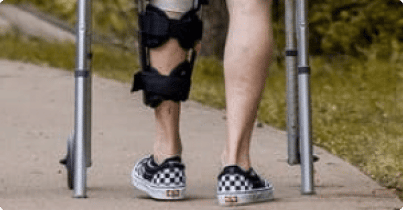
Braces and other orthotic devices
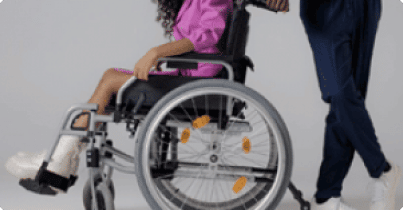
Wheelchairs and rolling walkers

Communication aids, such as special keyboards
A proper diagnosis and treatment program can be expensive. However, if medical negligence caused your child’s cerebral palsy, we can help you obtain the money and other resources you need to provide this care. Some ways in which medical negligence can cause cerebral palsy include:
- The failure to diagnose and treat medical conditions during pregnancy
- Delivery mistakes, such as cutting off oxygen to the baby before, during, or immediately after birth
- The failure to treat other conditions that occurred after birth, such as jaundice, that lead to cerebral palsy
Cerebral palsy and other birth injuries can be devastating for families, but the proper treatment can restore hope. Contact us if you suspect that medical negligence played a role in your child developing cerebral palsy. We can provide resources for you and may be able to obtain a financial settlement that will allow you to provide the best treatment for your child.
Written by:
Birth Injury Center Team
The Birth Injury Center aims to create informational web content and guides to help women and their families seeking support and guidance for birth injuries caused by medical negligence. All of the content published across The Birth Injury Center website has been thoroughly investigated and approved by medical expert Natalie Speer, RNC-OB, Attorney Ryan Mahoney.




